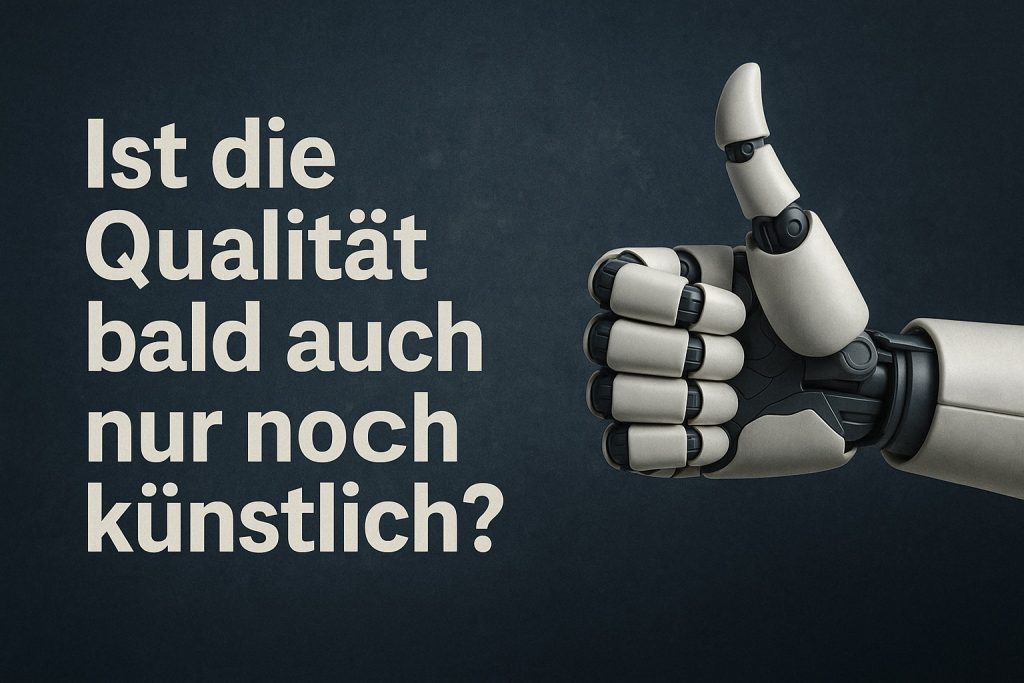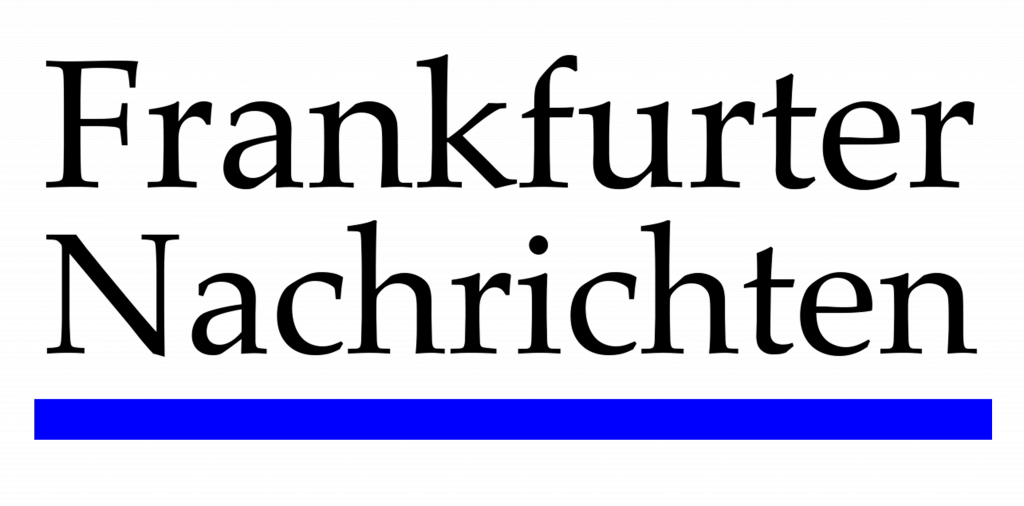(English version below)
Ein Essay von Carsten Prueser
Die Idee von Qualität war einmal ein Versprechen: auf Verlässlichkeit, Handwerk, Urteilskraft, auf die erfahrbare Überlegenheit einer Sache über das Mittelmaß. In Schulen wurde sie benotet, in Werkstätten geschmiedet, an Universitäten gelehrt und in Redaktionen gepflegt. Heute wirkt sie zunehmend – prekär. Drei Entwicklungen tragen dazu bei: das Primat des Software-Paradigmas in der Digitalisierung, das Denken in agilen Schleifen und MVPs (minimum viable product), sowie die generative Künstliche Intelligenz als neue, scheinbar demokratische Wissensquelle.
1. Vom Vollendeten zum Prozess
„Done is better than perfect“ ist das Mantra der agilen Welt. In ihr wird Qualität nicht erreicht, sondern simuliert. Das „Minimum Viable Product“ (MVP) ist kein Ziel, sondern Startsignal. Fertig ist, was gerade überlebt. Was früher als Produkt galt, ist heute eine Hypothese mit Benutzeroberfläche. Innere Stimmigkeit, Durcharbeitung, Reife – alles dem Tempo geopfert. Die Qualität eines Gegenstands ergibt sich nicht mehr aus seiner Substanz, sondern aus seiner Reaktion auf den Markt. Wer klickt, hat recht. Wer iteriert, gewinnt.

Image: ChatGPT 2025, no rights
2. Die digitale Form kennt kein Gewicht
Digitalisierung bedeutet Entmaterialisierung. Code kennt keine Gravitation. Das digitale Produkt ist flüchtig, ungreifbar, endlos kopierbar. Seine „Qualität“ misst sich an Ladezeiten, Kompatibilität, KPI. Es gibt keine Patina, kein Widerlager. Im Digitalen verschwindet die Spur des Körpers, die Handschrift, die Arbeit, die Aura. Eine PDF-Dokument —anders als das verlegte, redigierte Buch— kann von einer Schüler:in, einer Professorin oder einem Algorithmus stammen – und wird gleichwertig konsumiert. Die Differenz verschwindet hinter dem Interface.
3. Die KI als beliebige Autorität
Mit ChatGPT, Midjourney und anderen Werkzeugen wird das Expertentum entgrenzt. Der Text der KI klingt autoritativ, ohne Autor zu sein. Wissen erscheint allgegenwärtig, aber es fehlt das Urteil. Das Verständnis für Kontexte, Widersprüche, Nuancen. Was bleibt, ist eine Ästhetik der Glaubwürdigkeit: plausibel, glatt, stromlinienförmig. So wird die Illusion von Qualität massenhaft reproduzierbar. Die Frage nach dem besseren Argument weicht der Frage: „Wird es geklickt?“
4. Mittelmaß als Algorithmus
Der Markt, der Algorithmus, der Feedback-Loop: Sie alle belohnen das Künstlich-Bewährte. Qualität wird zur Funktion von Aufmerksamkeit, nicht von Exzellenz. Das System ist effizient, aber gleichgültig. Es erkennt Muster, aber keine Ideen. Innovation wird zur Optimierung, Kritik zur Kommentarfunktion. Die Idee eines Werkes, das mehr ist als seine Performance-Metrik, wird randständig.
5. Der Widerstand der Qualität
Und doch bleibt sie: die Sehnsucht nach dem Besseren, dem Durchgearbeiteten, dem wahren Unterschied, dem Nicht-Identischen. Vielleicht wird Qualität in der Zukunft kein Standard mehr sein, sondern Dissidenz. Ein Akt der Verweigerung gegen die Verwertungslogik, ein Bekenntnis zur Mühe, zur Tiefe, zur Urteilskraft. Wer heute noch Qualität schafft, tut dies nicht für den Markt, sondern für die Wahrheit eines Anspruchs, für die Menschen, die spüren, wenn etwas gemeint ist.
In diesem Sinne ist Qualität vielleicht bald nicht mehr natürlich, aber sie bleibt: menschlich.
(Herzlichen Dank an Harald Monihart für den ursprünglichen, inspirierenden Gedanken beim Mittagessen — gleichzeitig ein verstecktes Votum gegen das Home Office 😉 )
English Version
Will quality soon be nothing more than artificial?
An essay by Carsten Prueser
(Translated with DeepL.com, *of course*)
The idea of quality was once a promise: a promise of reliability, craftsmanship, discernment, and the tangible superiority of something above the average. It was graded in schools, forged in workshops, taught at universities, and cultivated in editorial offices. Today, it seems increasingly precarious. Three developments contribute to this: the primacy of the software paradigm in digitalization, thinking in agile loops and MVPs (minimum viable products), and generative artificial intelligence as a new, seemingly democratic source of knowledge.
1. From completion to process
“Done is better than perfect” is the mantra of the agile world. In it, quality is not achieved, but simulated. The “minimum viable product” (MVP) is not a goal, but a starting signal. What is finished is what survives. What used to be considered a product is now a hypothesis with a user interface. Inner consistency, thoroughness, maturity – all sacrificed to speed. The quality of an object no longer derives from its substance, but from its reaction to the market. Whoever clicks is right. Whoever iterates wins.
2. The digital form knows no weight
Digitization means dematerialization. Code knows no gravity. The digital product is fleeting, intangible, endlessly copyable. Its “quality” is measured by loading times, compatibility, KPIs. There is no patina, no counterweight. In the digital realm, the traces of the body, the handwriting, the work, the aura disappear. A PDF document—unlike a published, edited book—can come from a student, a professor, or an algorithm—and is consumed equally. The difference disappears behind the interface.
3. AI as an arbitrary authority
With ChatGPT, Midjourney, and other tools, expertise is becoming borderless. AI text sounds authoritative without having an author. Knowledge appears omnipresent, but judgment is lacking. Understanding of contexts, contradictions, nuances. What remains is an aesthetic of credibility: plausible, smooth, streamlined. Thus, the illusion of quality becomes mass-reproducible. The question of the better argument gives way to the question: “Will it get clicks?”
4. Mediocrity as algorithm
The market, the algorithm, the feedback loop: they all reward the artificially proven. Quality becomes a function of attention, not excellence. The system is efficient but indifferent. It recognizes patterns but not ideas. Innovation becomes optimization, criticism becomes a comment function. The idea of a work that is more than its performance metrics becomes marginal.
5. The resistance of quality
And yet it remains: the longing for the better, the well-crafted, the true difference, the non-identical. Perhaps in the future, quality will no longer be the standard, but dissidence. An act of refusal against the logic of exploitation, a commitment to effort, to depth, to discernment. Those who still create quality today do so not for the market, but for the truth of a claim, for the people who sense when something is meant.
In this sense, quality may soon no longer be natural, but it remains: human.
(Many thanks to Harald Monihart for the original, inspiring thought during lunch — at the same time a hidden vote against the home office 😉 )
